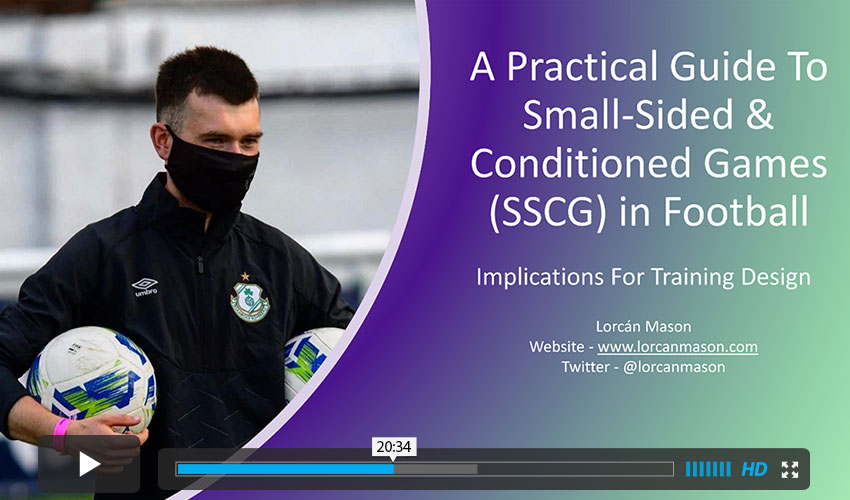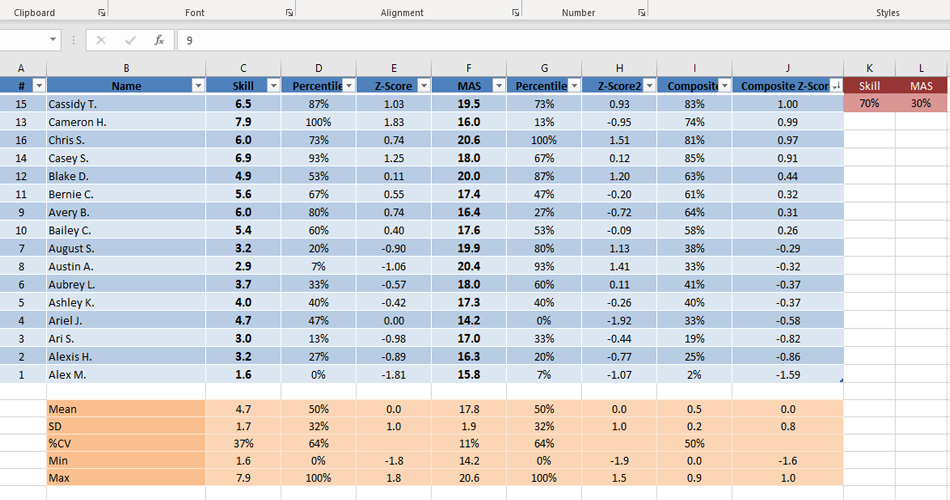A Practical Guide to Small Sided and Conditioned Games
Small Sided and Conditioned Games (SSCGs) games describe an umbrella term that describes any smaller form of official match-play characterised by either a reduction in player numbers and/or a reduction in pitch dimensions (Hill-Haas et al., 2011) and are classified as small-sided (SSGs) (< 4 vs. 4), medium-sided (MSGs) (5 vs. 5 to 8 vs. 8) and large-sided (LSGs) (>9 vs. 9) games (Owen et al., 2011).
To further this point, SSGs are game-based training drills that are characterised by the alterations of pitch size (Casamichana and Castellano, 2010), player numbers (Castellano, Casamichana and Dellal, 2013) and rules (Hill-Haas et al., 2010). These considerations are of the utmost importance when implementing SSCGs, as altering the task constraints of SSCGs will produce differing technical, tactical (Davids et al., 2013; Ometto et al., 2018) and physiological (Hill-Haas et al., 2011; Rampinini et al., 2007) outcomes. This method of training enables coaches and athletes of all levels to teach and learn not only technical skills but also the tactical, decision-making and physical requirements of the sport (Aguiar et al., 2012; Hill-Haas et al., 2011; Silva et al., 2016) and facilitates the execution of these skills in the performance environment (Davids et al., 2013) which contributes to talent development (Bennett et al., 2018).
The full scope of SSCGs are explored in the following presentation and the accompanying mind maps, which demonstrates the considerations for the alterations associated with the task constraints of SSCGs and the subsequent effects on the outcomes of the games.
References
- Aguiar, M., Botelho, G., Lago, C., Macas, V. and Sampaio, J. (2012) ‘A review on the effects of soccer small-sided games’, J Hum Kinet, 33(2012), pp. 103-13. DOI: 10.2478/v10078-012-0049-x.
- Bennett, K. J., Novak, A. R., Pluss, M. A., Stevens, C. J., Coutts, A. J. and Fransen, J. (2018) ‘The use of small-sided games to assess skill proficiency in youth soccer players: a talent identification tool’, Science and Medicine in Football, 2(3), pp. 231-236.
- Davids, K., Araújo, D., Correia, V. and Vilar, L. (2013) ‘How small-sided and conditioned games enhance acquisition of movement and decision-making skills’, Exercise and sport sciences reviews, 41(3), pp. 154-161.
- Hill-Haas, S. V., Dawson, B., Impellizzeri, F. M. and Coutts, A. J. (2011) ‘Physiology of small-sided games training in football: a systematic review’, Sports Med, 41(3), pp. 199-220. DOI: 10.2165/11539740-000000000-00000.
- Ometto, L., Vasconcellos, F. V., Cunha, F. A., Teoldo, I., Souza, C. R. B., Dutra, M. B., O’Sullivan, M. and Davids, K. (2018) ‘How manipulating task constraints in small-sided and conditioned games shapes emergence of individual and collective tactical behaviours in football: A systematic review’, International Journal of Sports Science & Coaching, 13(6), pp. 1200-1214.
- Rampinini, E., Impellizzeri, F. M., Castagna, C., Abt, G., Chamari, K., Sassi, A. and Marcora, S. M. (2007) ‘Factors influencing physiological responses to small-sided soccer games’, J Sports Sci, 25(6), pp. 659-66. DOI: 10.1080/02640410600811858.
- Silva, P., Vilar, L., Davids, K., Araujo, D. and Garganta, J. (2016) ‘Sports teams as complex adaptive systems: manipulating player numbers shapes behaviours during football small-sided games’, Springerplus, 5, pp. 191. DOI: 10.1186/s40064-016-1813-5.
- Owen, A. L., Wong, D. P., McKenna, M. and Dellal, A. (2011) ‘Heart rate responses and technical comparison between small-vs. large-sided games in elite professional soccer’, The journal of strength & conditioning research, 25(8), pp. 2104-2110.
- Casamichana, D. and Castellano, J. (2010) ‘Time-motion, heart rate, perceptual and motor behaviour demands in small-sides soccer games: effects of pitch size’, J Sports Sci, 28(14), pp. 1615-23. DOI: 10.1080/02640414.2010.521168.
- Castellano, J., Casamichana, D. and Dellal, A. (2013) ‘Influence of game format and number of players on heart rate responses and physical demands in small-sided soccer games’, J Strength Cond Res, 27(5), pp. 1295-303. DOI: 10.1519/JSC.0b013e318267a5d1.
- Hill-Haas, S. V., Coutts, A. J., Dawson, B. T. and Rowsell, G. J. (2010) ‘Time-motion characteristics and physiological responses of small-sided games in elite youth players: the influence of player number and rule changes’, J Strength Cond Res, 24(8), pp. 2149-56. DOI: 10.1519/JSC.0b013e3181af5265.












Responses